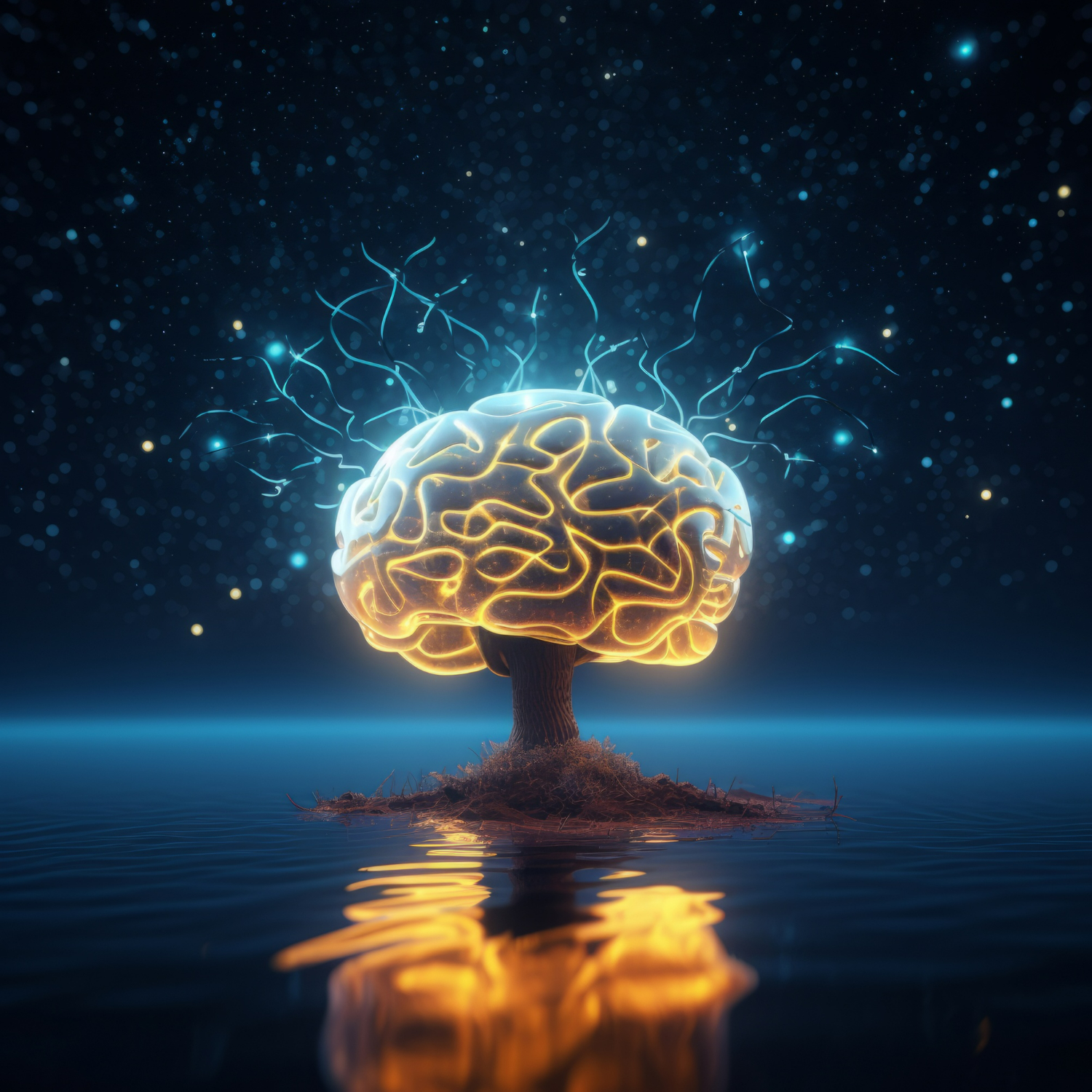
Recent developments in brain-computer interface (BCI) technology have created several fascinating new avenues for the treatment of mental health issues. BCIs in particular may improve the quality of life for people with mental health issues by assisting them in better understanding and managing their symptoms.
To accomplish this, brain activity is detected by BCI and converted into commands or responses. With the use of this technology, medical professionals can learn more about the internal workings of mental health disorders and how they respond to therapy.
The global brain computer interface market size was evaluated at USD 2.13 billion in 2022 and is projected to surpass around USD 9.44 billion by 2032 with a registered CAGR of 16.7% from 2023 to 2032. The brain-computer interface market size in the United States will reach around USD 1,383.1 million by 2030.
In this article let us see how this technology is aiding in treating mental health issues like depression and the associated challenges.
The Potential of Brain-Computer Interfaces to Improve Mental Health Outcomes
The field of mental health condition management could undergo a significant transformation with the advancement of brain-computer interfaces (BCIs). Depression, anxiety, and post-traumatic stress disorder are just a few of the mental health issues that BCIs have been used to treat recently.
Brainwave correlates of various stimuli, including sounds and images, can be measured with BCIs to gather information about how an individual’s brain reacts to stress.
- Physicians can use this information to create customized treatments for each patient’s specific requirements.
- BCIs can also be used to help individuals manage their own symptoms. For instance, by providing real-time feedback on a person’s emotions and reactions, a BCI can help them learn to recognize and control their reactions to stressful situations. This can help people better manage their mental health and reduce the likelihood of a flare-up.
- Finally, BCIs can be used to monitor and track the progress of mental health treatments. By providing real-time data and feedback, healthcare professionals can adjust treatments as needed and ensure that individuals are getting the best care possible.
BCIs have the potential to enhance mental health therapies. To ensure the safe and ethical use of this technology, however, and to fully grasp its potential applications, more research is necessary.
Exploring the Benefits of Brain-Computer Interfaces to Treat Depression
Millions of people worldwide suffer from depression, a mental health illness that frequently has crippling side effects like exhaustion, social isolation, and suicidal thoughts. According to the National Institute of Mental Health, an estimated 21 million adults in the U.S. had at least one major depressive episode in 2020. The CDC reports major depression affects an estimated 5.4% of U.S. adults aged 50-59 and 5.6% of those aged 60 and over.
One of the primary advantages of BCIs is that-
- They make it possible for medical professionals to track a patient’s brain activity in real-time, which is particularly helpful when identifying and treating depression.
- Furthermore, BCIs can be used to provide individualized, targeted treatments based on the needs of each patient. Deep brain stimulation (DBS), transcranial magnetic stimulation (TMS), and electroconvulsive therapy (ECT) are a few therapies that have been developed for use with BCIs.
Although research on using BCIs to treat depression is still in its infancy, preliminary findings from ongoing studies are encouraging. For instance, a University of Pennsylvania study discovered that individuals receiving BCI treatment exhibited appreciable gains in their general mental health and mood.
Shanghai Ruijin Hospital has developed a brain-computer interface treatment for refractory depression using a brain pacemaker that can instantly make patients feel happy when the external switch is turned on.
Patients with depression have seen a 60% improvement in their condition after receiving brain-computer interface treatment, which involves the use of a neuromodulation device to stimulate nerves and alleviate symptoms.
As research into BCIs continues, they will likely become an increasingly important tool for treating depression.
Challenges and Proposed Solutions
Usability Issues
They include the issues related to the training process necessary for class discrimination. Information transfer rate (ITR) is one of the system evaluation metrics that combines both performance and acceptance aspects.
Training process
Either in terms of walking the user through the procedure or in terms of the quantity of recorded sessions, training the user takes time. It occurs during the classifier calibration phase or the preliminary phase.
Utilizing single trials rather than multi-trial analysis is one of the frequently explored solutions to this time-consumption issue. This approach is used to improve the signal-to-noise ratio and transfer the load of small training size to later BCI system components.
Information transfer rate (ITR)
It is the commonly used metric for command BCI system evaluation. The quantity of options, the precision of target identification, and the typical selection time all play a role. Thus, because selective attention strategies offer more choices than imagery BCI, they achieve higher ITR.
Technical challenges
Technical challenges involve issues related to the recording of electrophysiological brain signals which include non-linearity, non-stationarity and noise, small training sets, and accompanying dimensionality curse.
Non-linearity
Neural ensembles exhibit chaotic behavior in the brain, a highly complex nonlinear system. Therefore, nonlinear dynamic methods are a better fit for characterizing EEG signals than linear methods.
Non-stationarity and noise
One of the main challenges in creating a BCI system is the non-stationarity of electrophysiological brain signals. It starts a gradual alteration of the signals used over time, either in between or during the recording sessions. The variability of EEG signals can be attributed to the mental and emotional state background across different sessions.
Pre-processing in the temporal, spatial, or frequency domains has helped to improve the signal, particularly when it comes to external factors. Enhancing the signal-to-noise ratio (SNR) of EEG signals can be achieved by either raising the signal intensity or lowering the noise level.
Small training sets
Given that usability concerns have an impact on the training process, the training sets are rather small. Even though intensive training sessions are thought to be time-consuming and taxing for the participants, they give the users the experience they need to navigate the system and learn how to regulate the neurophysiological signals of their patients.
Translating the user’s intent into a valid choice through the use of machine learning techniques is a solution to this. They have been used, for instance, to get around some of the drawbacks brought on by small training sets, single trials, and the variation that occurs both within and between sessions.
High dimensionality curse
To maintain high spatial accuracy in BCI systems, signals are recorded from multiple channels. Consequently, the performance of the classifier will only be impacted by a limited set of unique characteristics rather than the entirety of the recorded signals, which may contain redundant information.
In general, using five to ten times as many training samples per class as the number of dimensions is advised. However, this approach is unsustainable in a high-dimensional setting like the BCI system, which leads to the dimensionality curse growing.
To Conclude
Brain-Computer Interfacing provides a channeling facility between the brain and external equipment. With the growing concern about depression globally, it is of utmost importance that conventional treatment strategies are replaced with cutting-edge technologies.
At Codewave EIT, we have been successful in employing VR to design and architect immersive experiences that are aiding in fighting mental health issues.
BCI technology presents an equally promising opportunity, as it could enable personalized devices to monitor and improve mood in real time. This could prove transformative for depression treatment. Furthermore, we’re not just talking about generic brain zaps; the idea is to develop individualized gadgets that monitor and enhance your brain activity.
Codewave EIT’s intervention includes:
- Assessing user’s behavioral change needs & conceptualizing a solution that is deeply integrated with the user’s way of life
- Assessing emerging intelligence technologies aligned with Org’s vision & strategic initiatives
- Designing & architecting intelligent solutions, with the help of cutting-edge technology
- Designing & Developing a rapid prototype to test the solution, with potential users & user groups (ready for clinical trials)
If you are eager to try out these solutions for your healthcare sector, you can always talk to us. Let’s deal with mental health issues with a promising approach for a better future.
